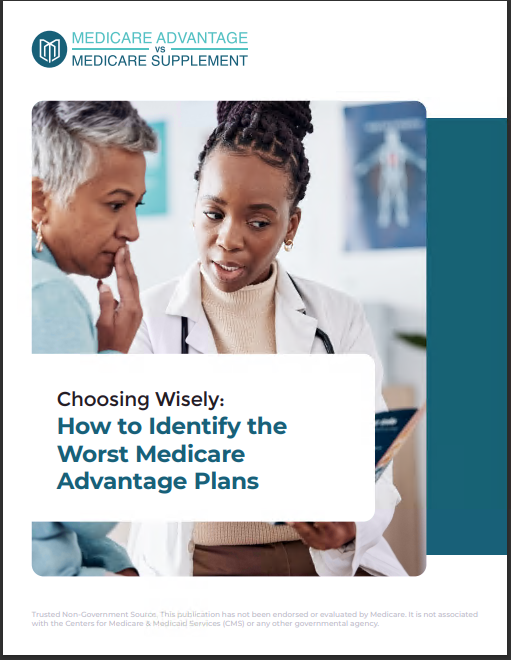Key Takeaways:
- Medicare and Medicaid serve distinct purposes but are often confused due to their similarities in offering health coverage.
- Understanding the key differences between these programs helps individuals make informed decisions about their healthcare options.
Medicare vs. Medicaid: The Differences People Overlook and Why It Matters
When discussing healthcare coverage in the United States, Medicare and Medicaid are two of the most prominent programs. Though their names sound similar, they cater to different populations and provide coverage in very different ways. For individuals nearing the age of 65 or those dealing with financial hardships, it’s crucial to know how these programs work, the eligibility criteria, and the types of coverage each offers. Many people confuse the two programs, and this confusion can lead to poor decision-making when selecting or navigating health insurance options. Let’s dive into the significant differences between Medicare and Medicaid and explore why understanding these distinctions is vital.
Eligibility: Who Can Get Coverage?
One of the most critical distinctions between Medicare and Medicaid lies in their eligibility requirements. Medicare primarily serves individuals aged 65 and older, although it can also cover younger individuals with specific disabilities or those suffering from end-stage renal disease (ESRD). This program is primarily funded through payroll taxes, meaning most people have paid into the system during their working lives and become automatically eligible upon reaching retirement age.
Medicaid, on the other hand, is a state and federal program designed to assist individuals and families with low incomes. Unlike Medicare, Medicaid has no age requirement; instead, eligibility is based on income, family size, and other state-specific criteria. People with disabilities, pregnant women, children, and seniors can qualify for Medicaid if their income meets the program’s guidelines.
| Program | Eligibility |
|---|---|
| Medicare | Age 65+ or certain younger individuals with disabilities, ESRD. Income is not a factor in eligibility. |
| Medicaid | Income-based, available to low-income individuals, including children, pregnant women, disabled individuals, etc. |
Coverage: What Is Covered?
Another common source of confusion is the difference in coverage between these two programs. Medicare is divided into several parts that each cover specific types of care:
- Medicare Part A: Hospital insurance, covering inpatient hospital stays, skilled nursing facilities, and some home health care.
- Medicare Part B: Medical insurance, covering outpatient care, doctor visits, preventive services, and some home health services.
- Medicare Part C (Medicare Advantage): Optional plans offered by private insurers that combine Part A and Part B and may include additional benefits.
- Medicare Part D: Prescription drug coverage, which helps beneficiaries cover the cost of medications.
Medicaid, on the other hand, provides more comprehensive coverage in some areas, particularly for long-term care services like nursing home care, which is not fully covered by Medicare. Medicaid can also cover personal care services, rehabilitation, and other costs that Medicare may not. Each state has its version of Medicaid, so benefits can vary depending on where you live.
| Service | Medicare | Medicaid |
|---|---|---|
| Hospital Stays | Covered under Part A | Covered |
| Doctor Visits | Covered under Part B | Covered |
| Prescription Drugs | Covered under Part D | Varies by state, but generally covered |
| Long-Term Nursing Care | Limited coverage | Comprehensive coverage |
| Home Health Services | Limited to specific conditions | Comprehensive and broader coverage depending on state |
Cost Structures: How Much Will It Cost?
Costs are another major difference between Medicare and Medicaid. Medicare is not entirely free. Most beneficiaries pay premiums, deductibles, and copayments for services under Parts B and D. There may also be additional out-of-pocket costs for those enrolled in Medicare Advantage (Part C). Medicare’s cost-sharing structure is designed to be more predictable but still leaves many beneficiaries facing significant expenses, particularly for prescription drugs and long-term care, which are only partially covered.
Medicaid, in contrast, has much lower or even zero costs for enrollees. In many states, Medicaid beneficiaries do not have to pay premiums, and their copayments are minimal or nonexistent, particularly for children, pregnant women, and people with disabilities. However, the exact cost structure can vary depending on the state and the individual’s income level.
Flexibility and Choice: Navigating Your Options
Medicare offers a great deal of flexibility, allowing enrollees to choose between Original Medicare (Parts A and B) and Medicare Advantage (Part C) plans, which may offer additional benefits like vision, dental, and hearing coverage. Beneficiaries can also select from various Part D prescription drug plans based on their medication needs. However, this flexibility comes with the responsibility of navigating a complex system of private insurers and weighing the pros and cons of different plans.
Medicaid, by contrast, typically has fewer choices in terms of plans and providers. While some states have moved toward managed care models, where beneficiaries can choose from a limited number of private plans, Medicaid’s focus is on providing affordable and accessible care rather than offering a wide variety of options. As a result, Medicaid enrollees may have fewer provider options, but they also experience fewer out-of-pocket costs.
Federal vs. State Control: Who Runs the Show?
Medicare is a federal program, meaning that the rules, benefits, and costs are consistent across the country. Once you’re eligible for Medicare, your benefits remain the same regardless of where you live, providing a uniform structure that many people find appealing. This makes Medicare easier to navigate for those who move between states or have lived in multiple regions.
Medicaid, on the other hand, is administered by the states with federal oversight, meaning that coverage and benefits can vary widely depending on where you live. While the federal government sets broad guidelines, states have a significant amount of flexibility in how they run their programs. This can lead to disparities in the quality and availability of care across different regions.
Common Misunderstandings: Debunking the Myths
Many people mistakenly believe that Medicaid is only for low-income families or that Medicare covers all health expenses once you reach 65. These misunderstandings can lead to people missing out on crucial benefits or failing to plan adequately for future healthcare costs.
Myth 1: Medicare Covers All Medical Expenses
While Medicare covers many essential services, it does not cover everything. Long-term care, dental, vision, and hearing services are often excluded or only partially covered. This means that even Medicare beneficiaries may need additional coverage or financial resources to manage their healthcare needs fully.
Myth 2: Medicaid Is Only for Children and Pregnant Women
Although Medicaid is often associated with children and pregnant women, it also covers millions of seniors, disabled individuals, and low-income adults. In fact, Medicaid is the primary payer for long-term care services in the U.S., including nursing home care, which Medicare only covers in limited circumstances.
Myth 3: You Can’t Have Both Medicare and Medicaid
Some individuals are eligible for both Medicare and Medicaid, a situation known as “dual eligibility.” These individuals typically have their Medicare premiums and out-of-pocket costs covered by Medicaid, providing them with more comprehensive health coverage. Dual-eligible individuals often receive better access to care and reduced costs, as Medicaid can cover services that Medicare does not.
Why It Matters: Making the Right Choice
Understanding the differences between Medicare and Medicaid is essential for making informed healthcare decisions. Choosing the right program—or navigating both as a dual-eligible individual—can have a significant impact on access to care, out-of-pocket costs, and long-term financial planning. With healthcare costs on the rise, knowing which program best suits your needs will help ensure you have the coverage necessary to maintain your health and well-being.
Ensuring You’re Covered for the Future
As people age or experience changes in income and health status, it’s critical to review their healthcare coverage options regularly. Whether qualifying for Medicare at 65 or becoming eligible for Medicaid due to financial circumstances, understanding these programs and their benefits can help you secure the right care at the right time.










